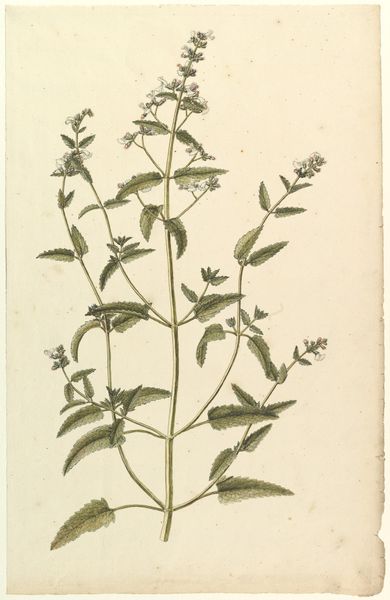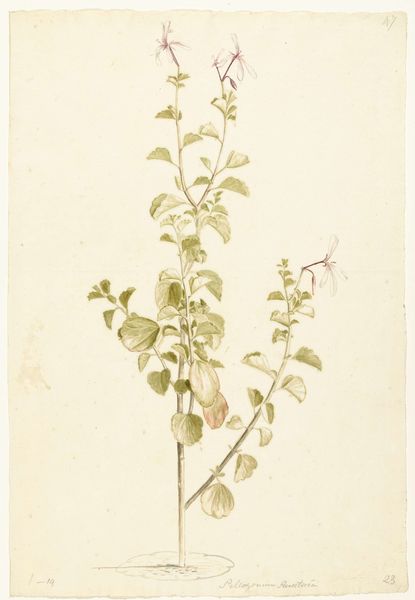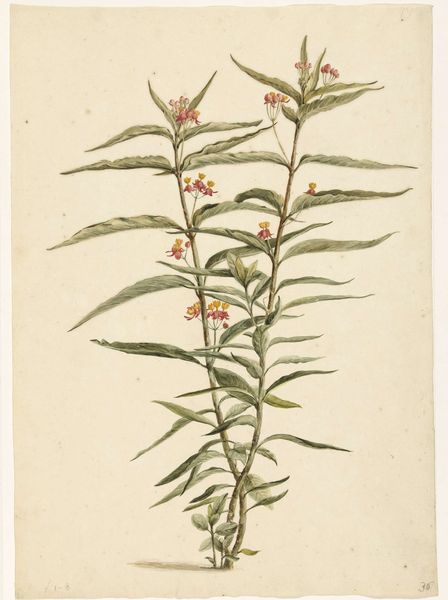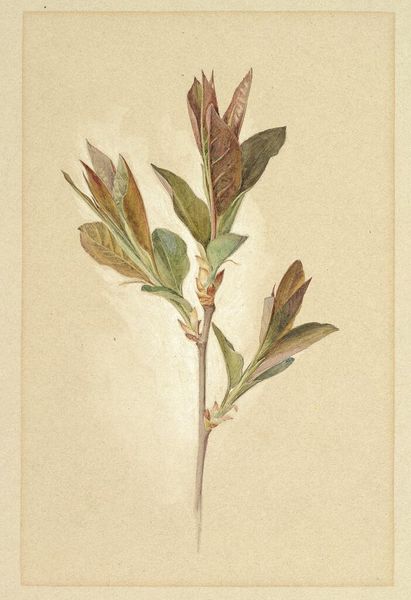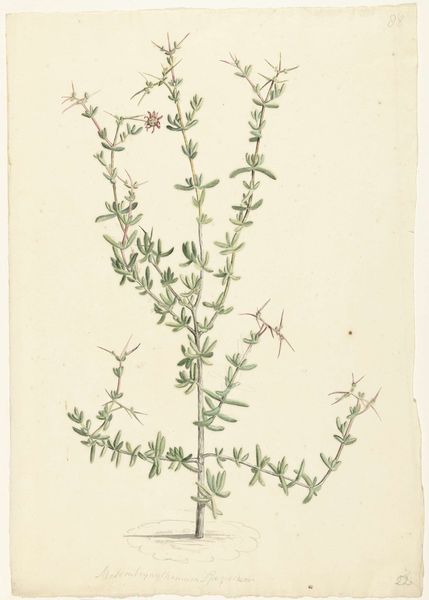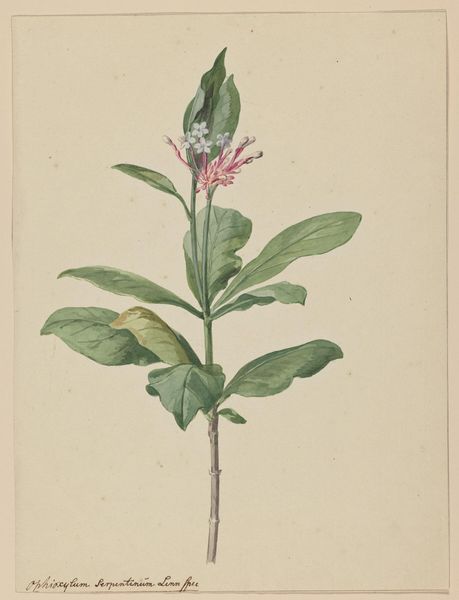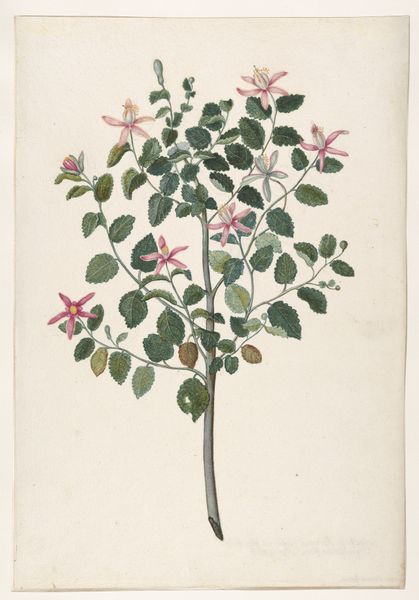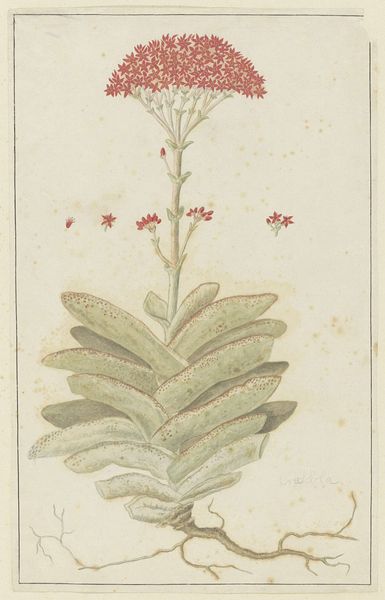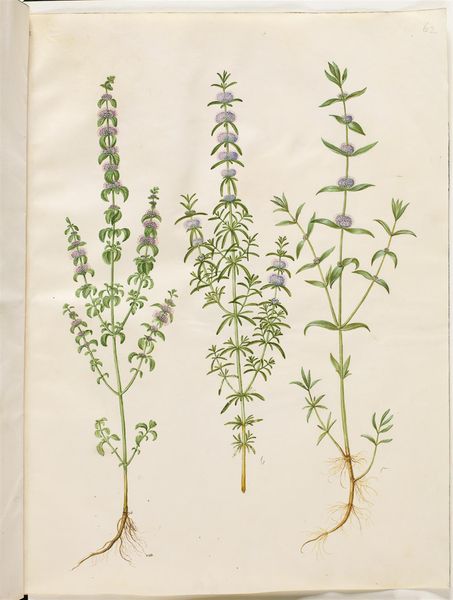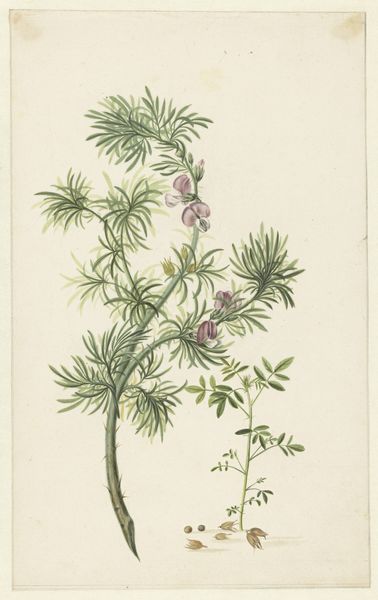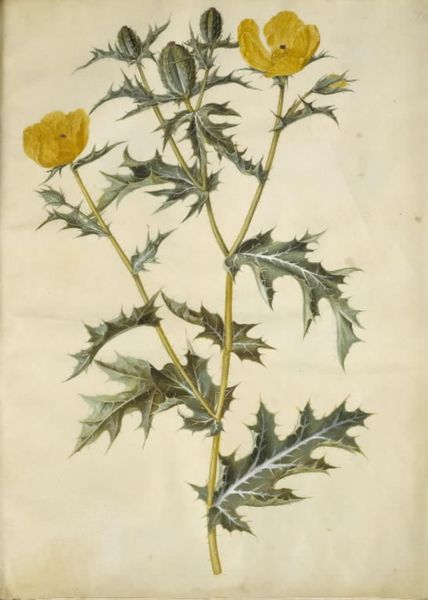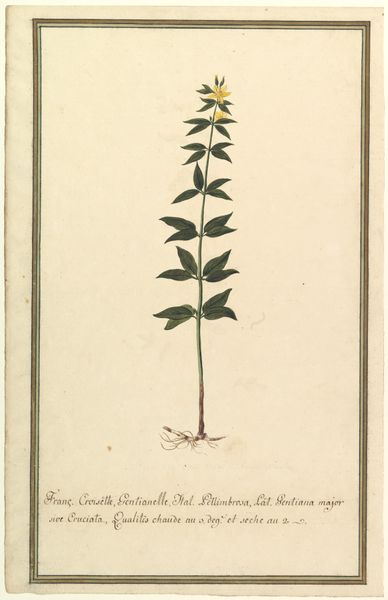
drawing, print, plein-air, paper, watercolor
#
drawing
#
still-life-photography
# print
#
plein-air
#
landscape
#
paper
#
watercolor
#
plant
#
botanical drawing
#
watercolour illustration
#
botany
#
academic-art
#
naturalism
#
botanical art
#
realism
Dimensions: 19 5/8 x 12 5/16 in. (49.8 x 31.3 cm)
Copyright: Public Domain
Curator: Looking at this subtle drawing from the early 19th century, I immediately get a sense of fragile, quiet observation. Editor: Absolutely. It feels so…exposed. Almost vulnerable. Curator: We’re looking at "Botanical Study," a watercolor drawing created sometime between 1815 and 1825. Currently, it resides here, at the Metropolitan Museum of Art. While its creator is unfortunately listed as anonymous, the artwork remains a fantastic example of the botanical arts! Editor: Botanical is right! I mean, we see every root, every leaf imperfection... It is hyper-realistic. It gives me a sensation that perhaps this was found near a riverside location or very damp setting because its roots are so frail looking. Does that makes sense? Curator: It does. You know, botanical art flourished during that period, intertwined with exploration and scientific documentation. Plants represented not just beauty, but new trade, medicinal properties. The precision of the depiction, focusing on detail, reflects humanity's attempts to catalogue and to control the natural world through knowledge. The plant, rendered almost clinically. Editor: Yet the little blush of pink on the tiny blossoms... That touch of almost hidden color speaks of life, even if presented so factually. Like a secret kept by nature. Curator: The image as a whole embodies the academic ideals from the time. Perhaps that accounts for some of the initial feeling of "vulnerability." The plant is utterly on display for us. Editor: It also speaks of the intense pleasure found in close observation, don’t you think? A world shrunk down and studied so completely… Curator: Perhaps it serves to remind us of how closely science, art, and curiosity used to be related; before hyper-specialization made interdisciplinary appreciation rare. Editor: Agreed, let us honor the joy and discipline involved in recording every curve of stem and fragile root.
Comments
No comments
Be the first to comment and join the conversation on the ultimate creative platform.
